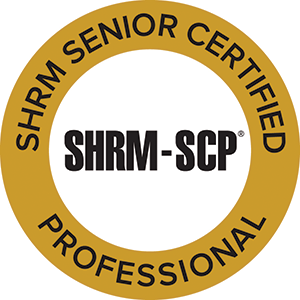 American consumers, and increasingly, American workers, have many choices these days in terms of the companies they choose to buy from or work for. And many are making their buying and/or employment decisions based on a company’s social responsibility. How does it give back to the community? How does it support sustainability? How does it treat its employees, customers, suppliers, and partners? How does it rate in integrity, valuing diversity, and gender equality? What are the company values and are they adhered to?
American consumers, and increasingly, American workers, have many choices these days in terms of the companies they choose to buy from or work for. And many are making their buying and/or employment decisions based on a company’s social responsibility. How does it give back to the community? How does it support sustainability? How does it treat its employees, customers, suppliers, and partners? How does it rate in integrity, valuing diversity, and gender equality? What are the company values and are they adhered to?
These are all questions that ten years ago or so we may not have factored into our buying decisions. Or thought about when we were searching for our next job opportunity. But these are very important questions today. In fact, 55% of consumers say they are willing to pay more for products from socially responsible companies. And, according to a 2015 Cone Communications study, 62% of Millennials would be willing to take a pay cut to work for a socially responsible company.
Companies that are socially responsible have a better public image – with consumers and in the media; have more engaged employees, and are able to attract higher quality talent; and are better able to attract and retain investors.
Here are a few examples.
Starbucks. Starbuck’s social responsibility is based on: community, ethical sourcing and environment. They develop community stores that partner with local nonprofits. They’ve pledged to hire at least 10,000 veterans and military by 2018, and they focus on diversity and inclusion in the workplace. They are committed to ensuring that their coffee, tea, cocoa and manufactured goods are responsibly and ethically produced and purchased. They build LEED certified stores, recycle, conserve water and energy, and strive to be environmentally friendly in every aspect of their operations.
TOMS Shoes. TOMS’ social responsibility model started with them giving a pair of shoes to someone in need for every pair of shoes sold. TOMS’ giveback model has since expanded to include coffee (providing water where needed), bags, eyewear and apparel. “With every product you purchase, TOMS will help a person in need. One for One®.”
Glassybaby. Glassbaby provides glassblower artisans the opportunity to continue their craft, and donates 10% of every glassbaby to the Glassbaby White Light Fund to help people, animals, and the planet. Glassbaby gives back almost $2 million annually. Glassbaby employs more than 80 glassblowers at their locations in Seattle and Berkeley.
Companies that do good do better. According to the CECP 2016 report, Giving in Numbers, companies that increased total giving by at least 10% between 2013 and 2015 saw increases in revenue and pre-tax profit, as opposed to all other companies, which saw decreases in both metrics.
“Creating a strong business and building a better world are not conflicting goals – they are both essential ingredients for long-term success.” – William Clay Ford Jr.


 As I discussed in my last blog, I’ve noticed an increase in complaints of bullying and harassment in the workplace, which I believe is reflective of the polarizing political atmosphere in this country. This bad behavior presents a challenge to leadership, and to HR professionals who have to deal with the complaints. It’s essential that everyone who is in charge of establishing and maintaining policies and Codes of Conduct ensure that those policies and Codes:
As I discussed in my last blog, I’ve noticed an increase in complaints of bullying and harassment in the workplace, which I believe is reflective of the polarizing political atmosphere in this country. This bad behavior presents a challenge to leadership, and to HR professionals who have to deal with the complaints. It’s essential that everyone who is in charge of establishing and maintaining policies and Codes of Conduct ensure that those policies and Codes: A clearly defined, communicated and continually reinforced company culture improves productivity, promotes ethical behavior, and contributes to business success. Employees are more likely to be engaged and loyal when they work in an environment of strong ethics, mutual respect, and trust.
A clearly defined, communicated and continually reinforced company culture improves productivity, promotes ethical behavior, and contributes to business success. Employees are more likely to be engaged and loyal when they work in an environment of strong ethics, mutual respect, and trust. In my past couple of blogs I’ve discussed harassment and bullying, how to recognize and prevent those behaviors, and the negative effects they can have on your business. But bullying and harassment are just two of many bad behaviors that can impact your business. Others include: unethical behavior, disrespect to customers or other employees, poor quality work, chronic lateness or absenteeism, and so on.
In my past couple of blogs I’ve discussed harassment and bullying, how to recognize and prevent those behaviors, and the negative effects they can have on your business. But bullying and harassment are just two of many bad behaviors that can impact your business. Others include: unethical behavior, disrespect to customers or other employees, poor quality work, chronic lateness or absenteeism, and so on.


